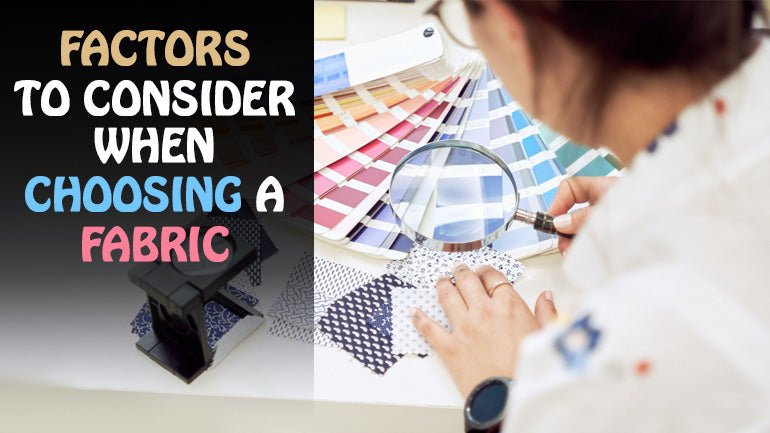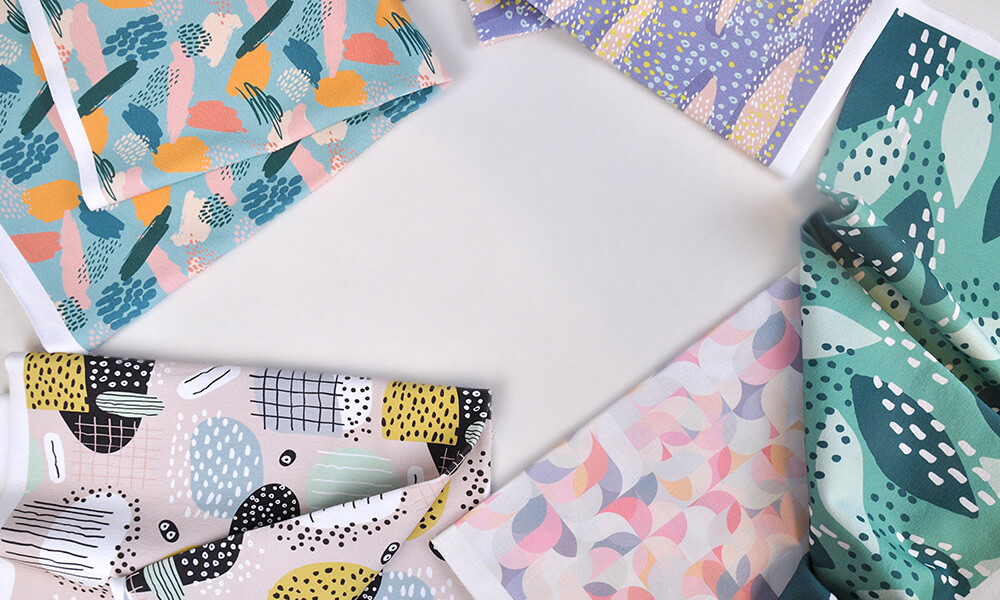The Facts About All 4 Way Stretch Fabrics Revealed
The Facts About All 4 Way Stretch Fabrics Revealed
Blog Article
The 2-Minute Rule for All 4 Way Stretch Fabrics
Table of ContentsA Biased View of All 4 Way Stretch Fabrics5 Simple Techniques For All 4 Way Stretch FabricsThings about All 4 Way Stretch FabricsThe 7-Minute Rule for All 4 Way Stretch FabricsNot known Facts About All 4 Way Stretch FabricsMore About All 4 Way Stretch FabricsAll 4 Way Stretch Fabrics - An Overview
As I likewise desire UV security from my garments when I go out, I would certainly pick a largely woven cotton material. Also the underwear is better in cotton (No spandex bands anywhere near the skin). Examine out the finest textiles suitable for making summertime garments. One more consideration when buying the fabric is the way it will after cleaning.A secure wager would be to purchase at least 10% additional fabric. If you can buy preshrunk textile, this is the best.

If you are matching the shade, like choosing the cellular lining for the major material or choosing material to include as trim, this is particularly important. The textile display rooms will usually have a light well where you can see the fabric in sunshine (or a window with good light from outside).
Top Guidelines Of All 4 Way Stretch Fabrics

A lot of materials have to do with 44 wide. When you go to get fabric, price quote just how a lot you want first and afterwards go to the store. Have a look at this article to know the solution to this often heard concern "Just how much material do I need". With a fat quarter, you will certainly get an 18 vast by 22 long.
These are readily available in the shops I constant as cut pieces they are mainly prized reduced and some of them, when they are last off the screw, valued very reduced. You will have to ask the salespersons for items like that. Some wonderful deals can be had by doing this. In dressmaking, we acquire fabric by the yard/meter.
The 6-Minute Rule for All 4 Way Stretch Fabrics
In a quarter of a lawn, you obtain a 9 by 44 strip of material, which has to do with 22 cm in length. It is always far better to acquire broader cloth. According to the width of materials, they may be called single-width and double-width. Single size is typically approximately 49 inches in size and dual width up to 60.
You can find out more regarding backyard to meter conversion right here. Take a look at this blog post on reviewing a tape step Select materials that are not too hard or stiff, or you wouldn't be comfortable in them. Linen, Jeans, flannel, For chillier climates, choose woollen (100% along with woollen blends) wool tweeds, wool crepe; it primarily depends upon what trousers you are speaking about Tailored pants, Unstructured Pant, Combined, Pants.
All cotton textiles are excellent for youngsters. Knit fabrics are additionally terrific for children you can go for wool knits.
Fascination About All 4 Way Stretch Fabrics
Inspect out this article on the very best fabric for clothing for children and children for more information on this topic. Light-weight cotton is my preferred to sew skirts. Cotton yard cloth in attractive prints is excellent. Silk jacket is a wonderful material for sewing skirts, as is Ponte Roma weaved textile.
Likewise, drapey rayons, soft woollen, lycra blends, and stretch velours are all ideal for sewing skirts. Woollen (Woollen crepe has a fantastic drape and provides sufficient structure for coats; wool tweeds are excellent too), Bed linen & Flannel. Velvet (Take A Look At the slouchy velour sports jacket tutorial, incidentally). Lightweight knits benefit free-flowing jackets such as this waterfall jacket pattern Raw silk, satin, taffeta, velvet, Shoelace, silk chiffon, and Fabric are all fantastic for making dresses.
You can get medium-weight materials with some spandex/elastane added for a suitable bodycon-type outfit. For drapey dresses, you can choose light-weight materials. Jersey has a drapey fit like this. Crepe, challis, and charmeuse are all drapey materials suited for this design. Have a look at these articles: Finest textile for making laid-back dresses and tops; Names of various gowns. Rayon, Acetate, and cotton lining materials are famously made use of.
Lightweight cotton textile, Cambric, Chintz, Twill, Faille, Seersucker, Poplin, lightweight woven broadcloth, batiste, bed linen, eyelet are good look at this now for making t-shirts and shirts. Smooth satin textile is good for making airy tops. When purchasing formed material (many of the patterned fabric comes with a width of 45 or 54 inches), there will be pattern repeat in these textiles, and this should be taken into factor to consider when reducing material as well as acquiring them i.e., if you want to match the patterns at the joints.
The Main Principles Of All 4 Way Stretch Fabrics
The themes will be dispersed in an organized fashion on the fabric. You may see occasionally If the print is not put on the material properly, it can not be matched or lined up when constructed without misshaping the material and the hang of the garment.


You can find out much more concerning grain and grainline of material right here. The material weight hinges on numerous variables like the weave, fiber type, and so on and is generally signified by GSM. GSM can differ from 60 -700; 700 being the GSM of really high-grade woolen material. A denim textile has a GSM of 400, depending on the weave.
One thing you have to keep in mind is that higher fabric weight does not denote greater fabric quality. You can not choose high fabric weight fabric jeans for a light-weight drifting stole.
In a nutshell, the most important standards to look for in the textile you purchase are as complies with (https://pagespeed.web.dev/analysis/https-www-4waystretchfab-com/cqaef5p87h?form_factor=mobile). The number of threads per inch of textile (yarns-per-inch).
All 4 Way Stretch Fabrics Things To Know Before You Buy
This is extremely important in any type of textile. In top quality material, this equilibrium (either in numbers or in dimension) will always be preserved. Processes made use of on textile to improve appearance and efficiency. The fibers that are woven to make the material will certainly either be as a solitary hair or will certainly be formed by combining two yarns (twisted).
A two-ply thread is exceptional to a single-ply yarn.
If you are preparing yourself to begin a brand-new embroidery job, picking a textile will certainly be one of the most essential step once you decide what you intend to make. After you've mosted likely to all the problem and expenditure of purchasing the sewing maker you like, a pattern you love, and a fabric you enjoy, you desire the completed product to be a success, right? One method to achieve that is to start by making certain your textile is genuinely ideal for the project.
Not known Incorrect Statements About All 4 Way Stretch Fabrics
How do you understand which textile will give you the best outcome? Picking a textile simply due to the fact that you love the print or style on it isn't always the best technique - cycling jersey.
You obtain the image. In order to prevent doing a whole task for practically nothing, we have actually assembled some tips to assist you make a decision which textile is appropriate for your task. Allow's claim you already have a job in mind; exactly how do you discover the best material for it? One means is to look at similar things in storesor ones you currently have.
Assume of the attributes you want the finished item to have. If garments, will it be fitted or loose? Dressy or everyday? For cozy weather or cold? Do you desire a strong color or a print? If you are making a non-wearable item such as a cushion cover or pot holder, make use of a tough material such as canvas.
There is so much details out there regarding textiles, their features, and their uses, it could reach be overwhelming! So do not try to take it in all at once; just start with the project available. Find out all you can about the textile you use for this project.
Report this page